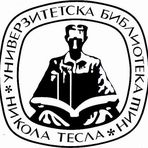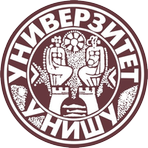Title
Kreiranje planerskog modela razvoja subregiona južne Srbije u cilju unapređenja procesa urbanizacije, sa osvrtom na potencijale obnovljivih izvora energije
Creator
Mitković, Mihailo P., 1990-
CONOR:
108280073
Copyright date
2023
Object Links
Select license
Autorstvo-Nekomercijalno 3.0 Srbija (CC BY-NC 3.0)
License description
Dozvoljavate umnožavanje, distribuciju i javno saopštavanje dela, i prerade, ako se navede ime autora na način odredjen od strane autora ili davaoca licence. Ova licenca ne dozvoljava komercijalnu upotrebu dela. Osnovni opis Licence: http://creativecommons.org/licenses/by-nc/3.0/rs/deed.sr_LATN Sadržaj ugovora u celini: http://creativecommons.org/licenses/by-nc/3.0/rs/legalcode.sr-Latn
Language
Serbian
Cobiss-ID
Theses Type
Doktorska disertacija
description
Datum odbrane: 29.9.2023.
Other responsibilities
Academic Expertise
Tehničko-tehnološke nauke
University
Univerzitet u Nišu
Faculty
Građevinsko-arhitektonski fakultet
Alternative title
Creation of a planning model for the development of the subregion of southern Serbia with the goal of improving the urbanization process, with reference to the potential of renewable energy sources
Publisher
[M. P. Mitković]
Format
[12], 470 str.
description
Biografija autora: str.470
Bibliografija: str. 396-420
description
Urbanism and spatial planning
Abstract (en)
Urbanization is a profound phenomenon with extensive implications for society, the economy, and the environment. If harnessed effectively, it can catalyze significant social and economic development. From a social perspective, urbanization fosters cultural exchange and social diversity while enhancing service accessibility. However, it also has drawbacks, including exacerbating socio-economic inequalities and weakening rural areas. In terms of urban development management, urbanization poses complex challenges to local and national policies. The process is not uniform but varies significantly across different regions and countries, reflecting diverse historical, socio-economic, and cultural contexts. Consequently, understanding and addressing urbanization requires a comprehensive approach, particularly in the context of the southern Serbian subregion of Jablanica and Pčinj districts under study.
This subregion is categorized as underdeveloped with developmental and demographic challenges. Despite these issues, it possesses considerable untapped renewable energy resources. The limited use of these resources leads to irreversible losses, reducing the area's appeal and adversely impacting population retention in the southern Serbian subregion. Hence, it's crucial to integrate this aspect into the planning process and utilize renewable energy sources (RES) fully with the help of modern knowledge and technologies to enhance the urbanization process.
In this context, the two dominant types of renewable energy sources in the subregion, biomass and solar energy, are examined. Biomass is the principal form of renewable energy in the Jablanički and Pčinj districts due to the abundance of agricultural resources. On the local scale, the City of Vranje exhibits considerable solar potential.
This research aims to develop a comprehensive, scientifically-grounded approach to explaining Serbia's urbanization phenomenon, in order to innovate the development planning model. The model is intended to enhance the quality and rate of urbanization in underdeveloped regional areas, particularly through more efficient use of renewable energy sources. In pursuit of this goal, the paper analyzes selected examples of sustainable settlement management using RES, leveraging the knowledge gained to develop the model. The southern Serbian subregion serves as a representative sample for the model's development, with the expectation of applicability to other similar territorial and functional-spatial units. Guidelines for the model's implementation are also provided, along with recommendations for its application in regions with comparable developmental characteristics.
Authors Key words
urbanizacija, obnovljvi izvori energije, subregionalni razvoj, planerski model razvoja
Authors Key words
urbanisation, renewable energy, subregional development, planning model of development
Classification
711.4:620.92(497.11)(043.3)
Subject
T 240
Type
Tekst
Abstract (en)
Urbanization is a profound phenomenon with extensive implications for society, the economy, and the environment. If harnessed effectively, it can catalyze significant social and economic development. From a social perspective, urbanization fosters cultural exchange and social diversity while enhancing service accessibility. However, it also has drawbacks, including exacerbating socio-economic inequalities and weakening rural areas. In terms of urban development management, urbanization poses complex challenges to local and national policies. The process is not uniform but varies significantly across different regions and countries, reflecting diverse historical, socio-economic, and cultural contexts. Consequently, understanding and addressing urbanization requires a comprehensive approach, particularly in the context of the southern Serbian subregion of Jablanica and Pčinj districts under study.
This subregion is categorized as underdeveloped with developmental and demographic challenges. Despite these issues, it possesses considerable untapped renewable energy resources. The limited use of these resources leads to irreversible losses, reducing the area's appeal and adversely impacting population retention in the southern Serbian subregion. Hence, it's crucial to integrate this aspect into the planning process and utilize renewable energy sources (RES) fully with the help of modern knowledge and technologies to enhance the urbanization process.
In this context, the two dominant types of renewable energy sources in the subregion, biomass and solar energy, are examined. Biomass is the principal form of renewable energy in the Jablanički and Pčinj districts due to the abundance of agricultural resources. On the local scale, the City of Vranje exhibits considerable solar potential.
This research aims to develop a comprehensive, scientifically-grounded approach to explaining Serbia's urbanization phenomenon, in order to innovate the development planning model. The model is intended to enhance the quality and rate of urbanization in underdeveloped regional areas, particularly through more efficient use of renewable energy sources. In pursuit of this goal, the paper analyzes selected examples of sustainable settlement management using RES, leveraging the knowledge gained to develop the model. The southern Serbian subregion serves as a representative sample for the model's development, with the expectation of applicability to other similar territorial and functional-spatial units. Guidelines for the model's implementation are also provided, along with recommendations for its application in regions with comparable developmental characteristics.
“Data exchange” service offers individual users metadata transfer in several different formats. Citation formats are offered for transfers in texts as for the transfer into internet pages. Citation formats include permanent links that guarantee access to cited sources. For use are commonly structured metadata schemes : Dublin Core xml and ETUB-MS xml, local adaptation of international ETD-MS scheme intended for use in academic documents.


